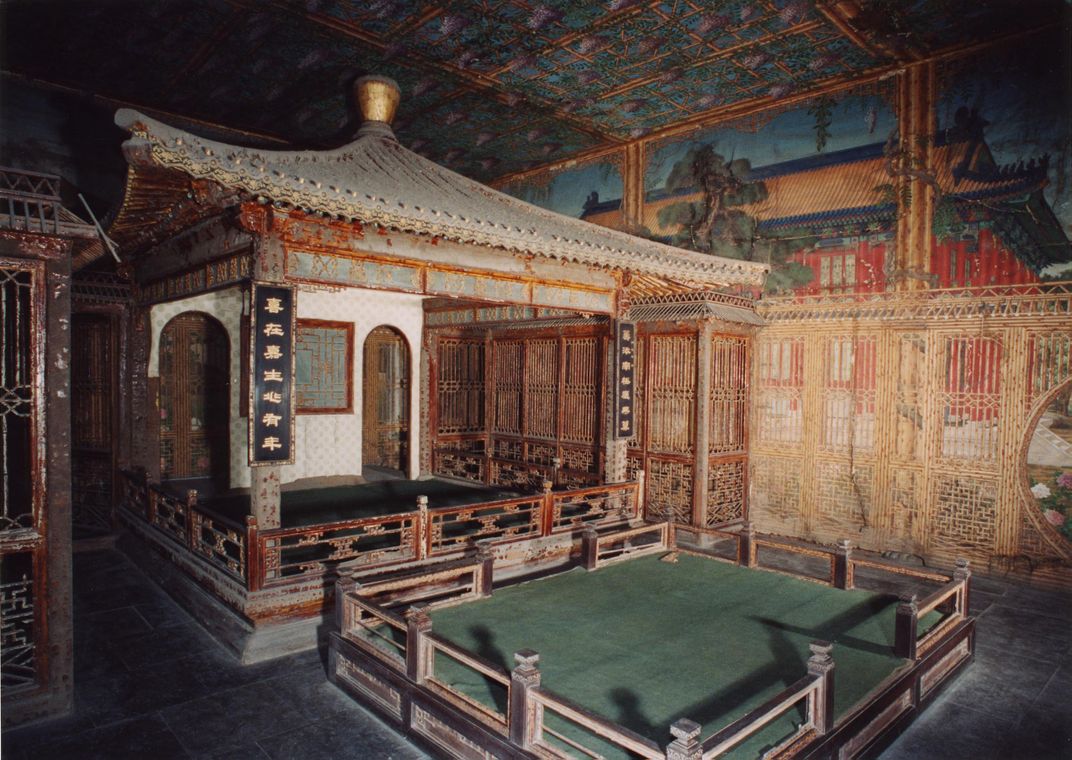Architect Annabelle Selldorf Will Design New Interpretation Center for China’s Forbidden City
The restored Qianlong Garden complex, a sprawling oasis of four courtyards and 27 pavilions, is set to open to the public for the first time in 2020
/https://tf-cmsv2-smithsonianmag-media.s3.amazonaws.com/filer/81/1c/811c3454-db63-4d18-9002-0e187b000635/juanqinzhai_moon_gate_after_conservation.jpg)
Come 2020, visitors to Beijing’s Forbidden City will be able to access the lavish two-acre Qianlong Garden complex for the first time in the site’s nearly 250-year history.
Tourists won’t have free range of the garden’s four courtyards and 27 pavilions, but as Gabe Cohn reports for The New York Times, a planned interpretation center set to be built by New York City-based architect Annabelle Selldorf and her firm, Selldorf Architects, will offer a portal into the palatial 18th-century compound, providing insights while simultaneously protecting the historical structures.
“It was … always [going to] be very limited access, just because of the sizes of the space and the fragility of the buildings and their contents,” Lisa Ackerman, interim chief executive officer of the World Monuments Fund (WMF)—which is co-sponsoring conservation alongside China’s Palace Museum—tells Cohn. “The idea of the visitor center was to find a way to give a lot of information to people who might only get to be in that first courtyard.”
According to a WMF press release, Selldorf is one of the only Americans ever chosen to spearhead an architectural project in China’s Forbidden City. Currently, her plan is to center the interpretation building within three halls surrounding an open pavilion. The west hall will feature exhibitions documenting the history of the garden, while the east hall will detail contemporary conservation efforts. The main hall, opening up into a panoramic view of courtyard rock gardens, will serve as a contemplative space.
Overall, Ackerman explains to Cohn, the center will be decidedly low-tech in an effort to mirror the tranquility of the site itself.

The Qianlong Garden was built between 1771 and 1776 as a retirement home for the Qing Dynasty’s fourth ruler, Emperor Qianlong. Designed to serve as a “mini-Forbidden City within the Forbidden City,” according to a WMF overview of the restoration, the complex is renowned for its harmonized rock gardens and intricate interiors, which are dotted with such details as bamboo marquetry and white jade cartouches. Trompe l’oeil silk murals found in these interior spaces reflect the influence of Western visitors, drawing on European artistic techniques including aerial perspective and chiaroscuro, or the emphasis of contrasts between light and dark.
Unusually, the garden remained largely untouched during the centuries following its creation—a fact that can be attributed partly to an imperial edict Qianlong issued in hopes of preserving the site for future generations.
When China’s last emperor, Puyi, left the Forbidden City in 1924, the garden was officially abandoned, ensuring its appearance was left unchanged but, at the same time, subjecting the site to what WMF describes as “a form of benign neglect.”
The new interpretation center represents the last phase of WMF and the Palace Museum’s conservation initiatives: As the press release notes, the two groups first began collaborating on the project in 2004. Four years later, Juanqinzhai, or the Studio of Exhaustion from Diligent Service, was restored to its former glory, complete with an array of trompe l’oeil paintings, jade inlays and sophisticated textile decorations. Then, in 2016, three structures in the garden’s fourth courtyard—Fuwangge (Belvedere of Viewing Achievements), Zhuxiangguan (Lodge of Bamboo Fragrance) and Yucuixuan (Bower of Purest Jade)—were also successfully conserved.
Restoration of interior and exterior buildings in the first, second and third courtyards, as well as construction of Selldorf's visitor center, will be completed by 2020, the 600th anniversary of the Forbidden City’s founding.
/https://tf-cmsv2-smithsonianmag-media.s3.amazonaws.com/accounts/headshot/mellon.png)
/https://tf-cmsv2-smithsonianmag-media.s3.amazonaws.com/accounts/headshot/mellon.png)